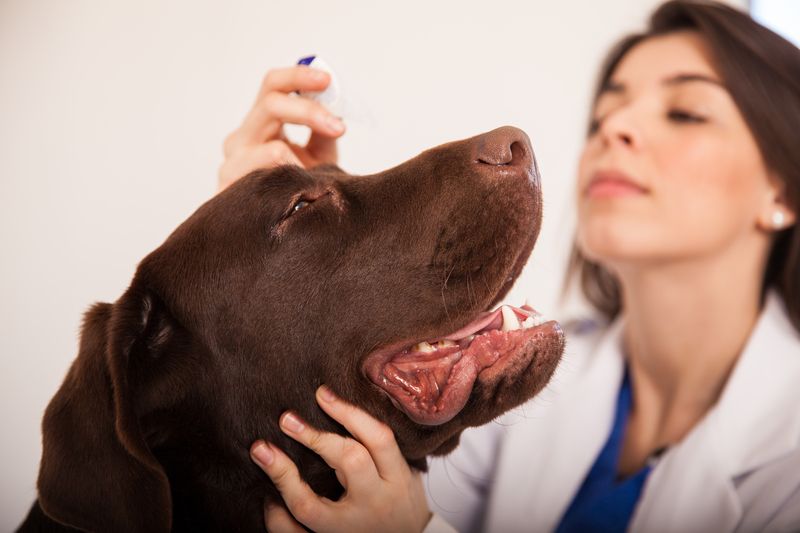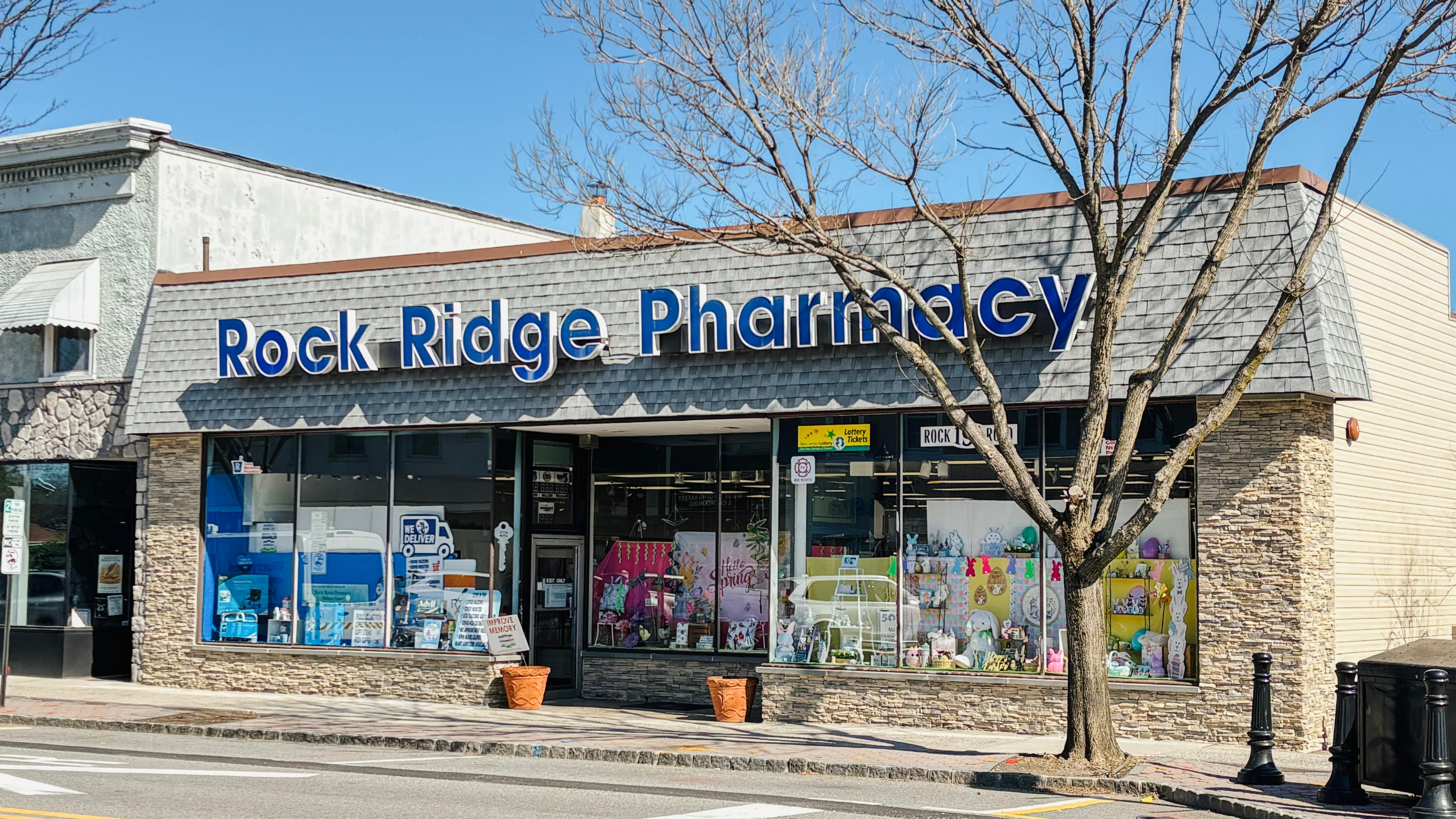Veterinary Ophthalmic Care • Prescription Required
Cyclosporine Eye Drops for Pets
Custom-compounded ophthalmic solutions for pets with dry eye (KCS), pannus, and chronic eye inflammation.
Veterinarian-prescribed • Pharmacist-guided • Pet-approved
What Is Cyclosporine?
Cyclosporine is an immunosuppressive medication that helps stimulate natural tear production and reduce ocular inflammation. It is the gold standard treatment for keratoconjunctivitis sicca (KCS), also called “dry eye,” as well as other immune-mediated eye conditions in dogs and cats.
Compounded through our PCAB-accredited partner in a USP <797>-compliant sterile facility, cyclosporine drops are prepared with precision, safety, and consistency in every batch.
Rock Ridge Pharmacy provides custom concentrations and preservative-free options, ensuring therapies that are veterinarian-prescribed, pharmacist-guided, and pet-approved.

Why Use Compounded Cyclosporine?
While commercial products like Optimmune® exist, compounded cyclosporine offers added flexibility and benefits for veterinary ophthalmic care.
Custom Concentrations
Available in strengths from 0.1% to 2%, tailored to your pet’s response.
Multiple Base Options
Formulated in different bases for improved tolerance and absorption.
Preservative-Free
Reduces long-term irritation for pets with sensitive or inflamed eyes.
Alternative Option
Provides therapy when commercial products are unavailable or ineffective.
Pharmacist Expertise
Veterinary compounding ensures potency, stability, and optimal outcomes.
How Cyclosporine Works
Cyclosporine selectively targets immune cells to calm inflammation, restore tear function, and protect eye tissues in pets with chronic dry eye conditions.
Reduces Immune Inflammation
Suppresses overactive T-lymphocytes, easing inflammation in the conjunctiva and cornea.
Restores Tear Production
Protects and stimulates tear glands, improving natural lubrication for the eyes.
Promotes Corneal Healing
Reduces inflammatory damage, supporting repair of corneal tissue and preventing scarring.
Prevents Ongoing Damage
Helps stop further immune system injury to delicate eye structures, improving long-term outcomes.
| Medication | Strength | Form | Base | Primary Use |
|---|---|---|---|---|
| Cyclosporine | 1% | Eye Drops (15ml) | Aqueous | KCS, dry eye, pannus |
| Cyclosporine | 2% | Eye Drops (10–15ml) | Aqueous | Moderate to severe KCS |
| Cyclosporine | 0.2% | Eye Drops (10–15ml) | Corn Oil | Mild KCS, maintenance therapy |
| Cyclosporine | 1–2% | Eye Drops (5–15ml) | Corn Oil | Severe dry eye conditions |
| Cyclosporine | 1–2% | Eye Drops (10–15ml) | MCT Oil | Sensitive pets, long-term use |
Understanding Base Options & Costs
Different formulations balance comfort, dosing convenience, and affordability
Aqueous (Water-Based)
Pricing: Standard
- Fast-absorbing and lightweight
- Great for initial therapy or sensitive pets
- May require 2–3 daily applications
- Most economical option
Corn Oil
Pricing: Mid-Range
- Thicker consistency for longer eye contact
- Excellent for severe dry eye
- Often allows twice-daily dosing
- Moderate price increase
MCT Oil
Pricing: Premium
- Balanced absorption and comfort
- Well-tolerated by most pets
- Good compromise between aqueous & corn oil
- Highest cost due to specialized processing
How to Give the Drops
Step-by-step guide for safe application
Dosage Guidelines & Cost Considerations
Initial Dose
1 drop in affected eye(s) 2–3 times daily.
Improvement Phase
Continue consistently for 4–6 weeks minimum.
Maintenance Dose
Often reduced to 1–2 times daily once improvement is achieved.
Monthly Cost
Depends on strength & duration — call Rock Ridge Pharmacy for details.
If You Miss a Dose
Give when remembered, unless close to the next dose — then skip and resume normal timing.
Long-Term Use
Most pets require lifelong treatment to manage chronic conditions effectively.
Storage & Safety Information
Proper handling and monitoring of Cyclosporine ophthalmic drops helps maintain safety and effectiveness.
Storage & Handling
- Keep refrigerated: 36–46°F (2–8°C).
- Protect from light and heat.
- Do not freeze.
- Shake gently if suspension before each use.
- Replace cap tightly after each use.
- Check expiration date regularly.
- Discard if solution becomes cloudy, changes color, or develops particles.
Safety & Side Effects
Cyclosporine is generally well-tolerated. Most side effects are mild and temporary:
- Temporary stinging or burning upon application.
- Brief increased tearing for a few minutes.
- Mild redness that resolves quickly.
- Slight discharge during the first weeks (part of healing).
Contact your veterinarian if you notice: persistent redness/swelling after the first week, eye cloudiness, excessive blinking or pawing, yellow/green discharge, worsening of symptoms, or sudden behavioral changes.
Treatment Timeline & Cost Planning
Week 1–2
May see initial reduction in redness and irritation.
Cost: Full dose frequency, highest monthly expense.
Week 4–6
Noticeable improvement in tear production and comfort.
Cost: Continued full dosing, potential for slight reduction.
Week 8–12
Maximum therapeutic benefit typically achieved.
Cost: Often reduced to maintenance dosing, lower monthly cost.
Long-term
Most pets require ongoing treatment to maintain benefits.
Cost: Maintenance dosing 30–50% less than initial treatment.
Veterinary Monitoring
Check-ups recommended every 3–6 months.
Additional cost: Per veterinary visit.

Why Choose Rock Ridge Pharmacy for Veterinary Eye Drops?
- PCAB-accredited & USP <797> sterile lab ensuring safety and quality.
- Veterinary compounding expertise trusted since 1950.
- Custom dosing & formulations for different species and conditions.
- Fast turnaround — most prescriptions ready in 1–2 business days.
- Pharmacist support for storage, use, and follow-up care.
Rock Ridge Pharmacy works with veterinarians and pet owners to provide safe, sterile, and personalized ophthalmic solutions backed by decades of trusted care.
FAQs About Cyclosporine Eye Drops at Rock Ridge Pharmacy
Do I need a prescription?
Yes. Cyclosporine is only available with a veterinarian's prescription after proper diagnosis of your pet's eye condition.
How much will this cost per month?
Monthly costs typically range from $45–95 depending on strength, base, and dosing frequency. Maintenance therapy is usually 30–50% less expensive than initial treatment.
Does pet insurance cover compounded medications?
Many pet insurance plans cover prescription medications when medically necessary. Check with your provider and keep receipts for potential reimbursement.
How long before I see improvement?
Most pets show initial improvement within 2–4 weeks, with maximum benefit by 6–8 weeks. Some pets may respond faster, while severe cases may take longer.
Is this safe for long-term use?
Yes. Cyclosporine has an excellent long-term safety profile and most pets use it for years without problems when monitored by a veterinarian.
What if my pet doesn't improve after 6–8 weeks?
Our pharmacist will work with your veterinarian to adjust the concentration, change the base vehicle, or modify the treatment plan. Additional consultation included at no extra charge.
Can I use this with other eye medications?
Yes, but follow your veterinarian's instructions about timing. Generally, wait 5–10 minutes between different eye drops. Our pharmacist can provide specific guidance.
Is it preservative-free?
We offer preservative-free formulations, which are often preferred for long-term use to minimize irritation. This may add $10–15 to the base cost.
What's the difference between strengths?
Higher concentrations (1–2%) are used for severe cases or poor responders, while lower concentrations (0.1–0.5%) may be sufficient for milder cases or maintenance. Higher strengths typically cost $10–20 more.
Can I stop the medication once my pet's eyes look better?
No. Most pets with KCS require lifelong treatment. Stopping medication typically results in return of symptoms within days to weeks, requiring restart at full dosing.
What if I accidentally get it in my eye?
Rinse thoroughly with clean water. While generally safe, contact your physician if irritation persists.
Can this be used in both dogs and cats?
Yes, though it's more commonly prescribed for dogs. Cats may be more sensitive and require closer monitoring. Our pharmacist will provide species-specific guidance.
How should I travel with this medication?
Store in a cooler with ice packs to maintain refrigeration. Most formulations can tolerate brief periods at room temperature. We can provide travel guidelines.
What if the medication accidentally freezes?
Do not use frozen medication as it may affect stability and effectiveness. Contact us for a replacement – we offer a one-time replacement guarantee for storage accidents.
Why might my vet choose compounded over commercial products?
Custom concentrations, preservative-free options, different base vehicles, or when commercial products are unavailable or not tolerated. Often more cost-effective for long-term use.
How do I know if it's working?
You should notice less squinting, reduced redness, clearer eyes, and your pet seeming more comfortable. Your vet will also measure tear production. Our pharmacist can help you track progress.
Are there generic alternatives to reduce cost?
Our compounded cyclosporine is already a cost-effective alternative to brand-name products. We can discuss concentration adjustments with your vet to optimize both effectiveness and cost.
What payment options do you accept?
We accept cash, credit cards, CareCredit, and can work with pet insurance for direct billing in some cases. Payment plans available for long-term treatments.
